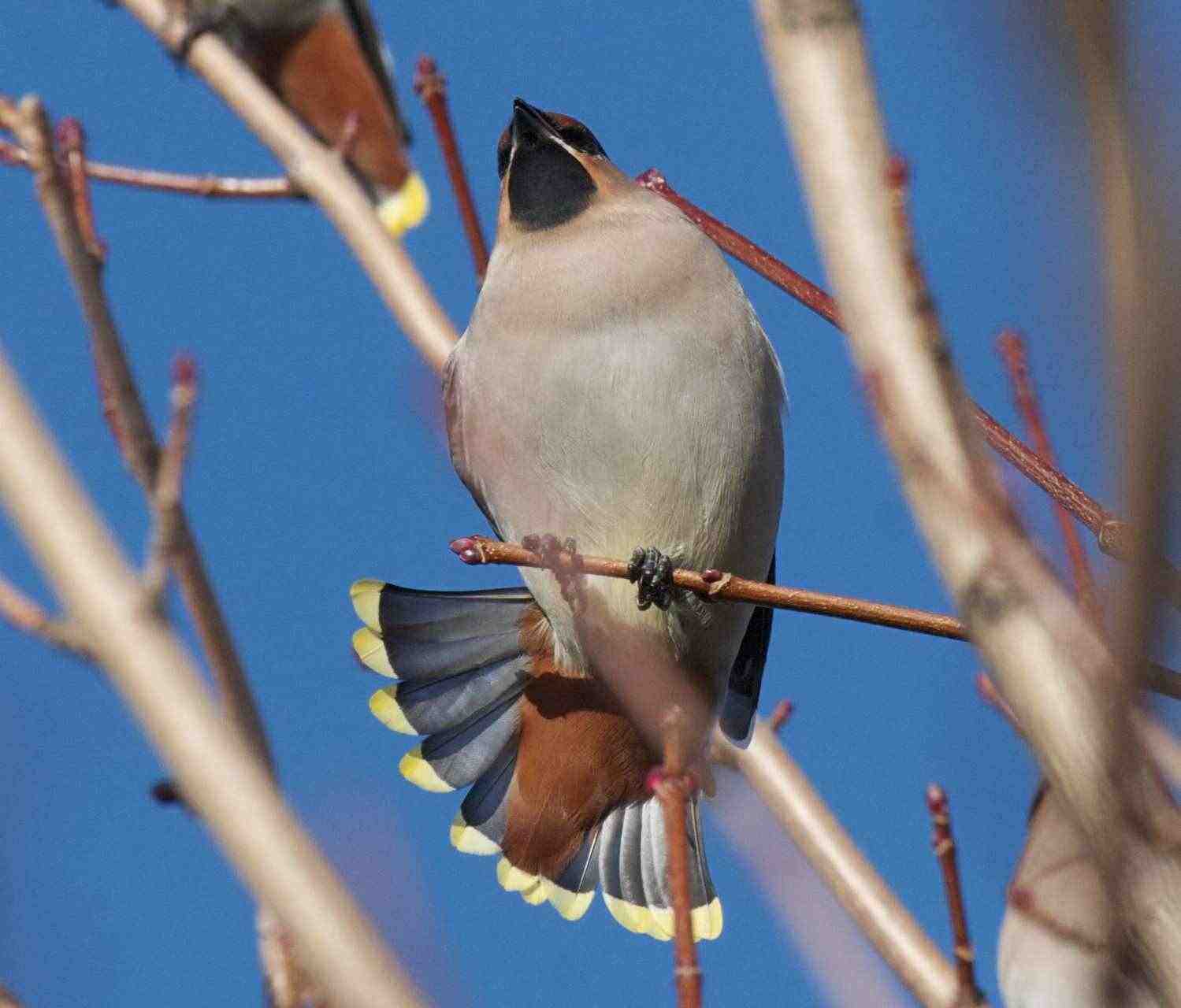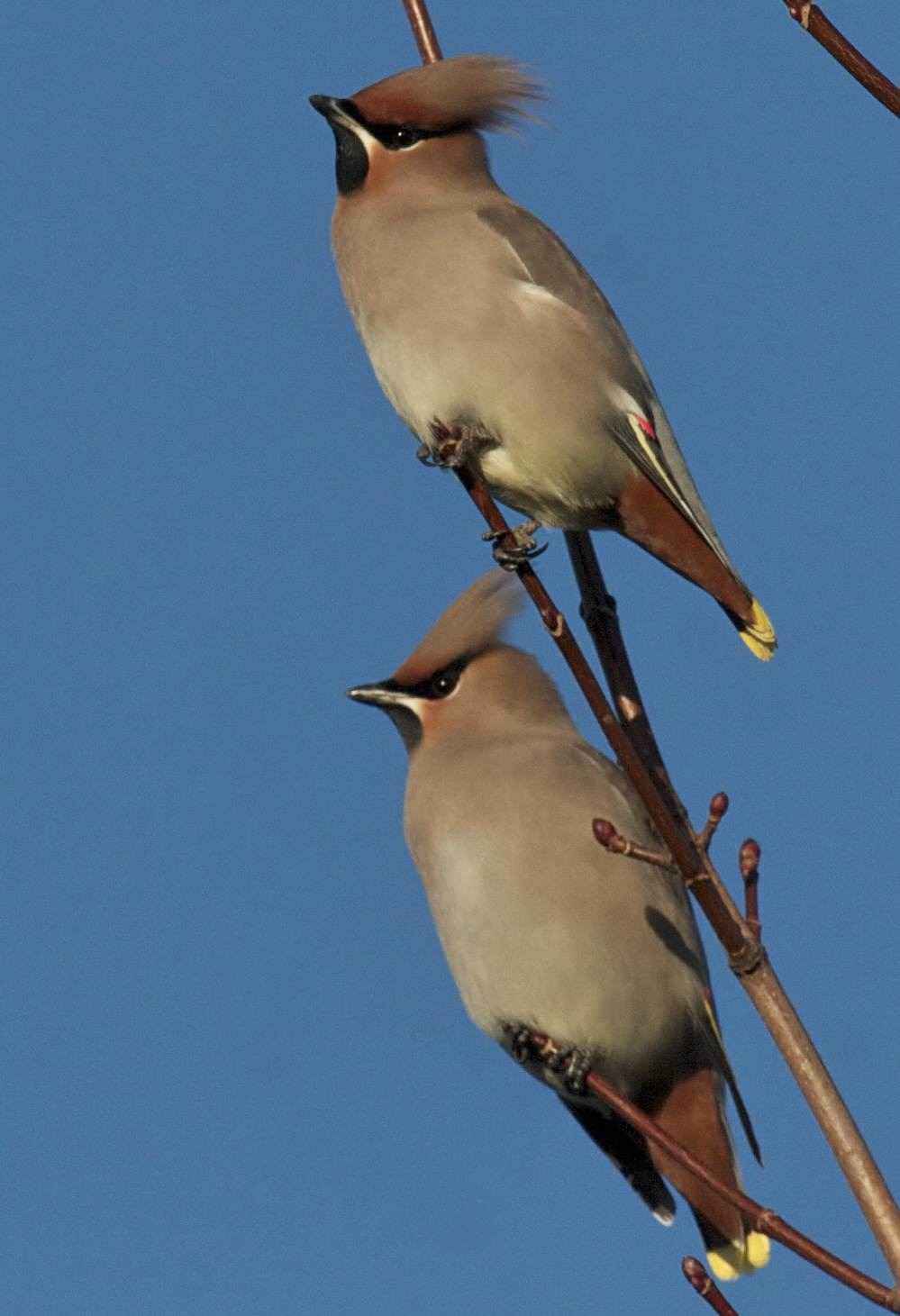



Here are a couple of pics from Northumberland , from around Christmas.This is the nominate race 'garrulus'. Males are said to have a broader yellow terminal tail band and a better defined throat patch.Adults have white 'hooks' to the tips of the primaries , which the juveniles lack - I think this holds true for the 'centralasiae' subspecies,which means this is a first winter. Shame about the tail,but look on the bright side,at least it managed to escape from its bars.
The waxy appendages on the secondaries remain of mysterious functional significance -like me; I Hope it finds its way home!
eric
[
Last edited by RUWright at 11/02/2011 01:40 ]


